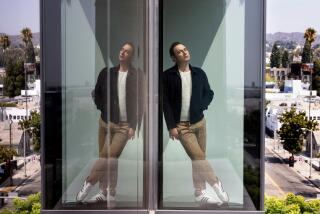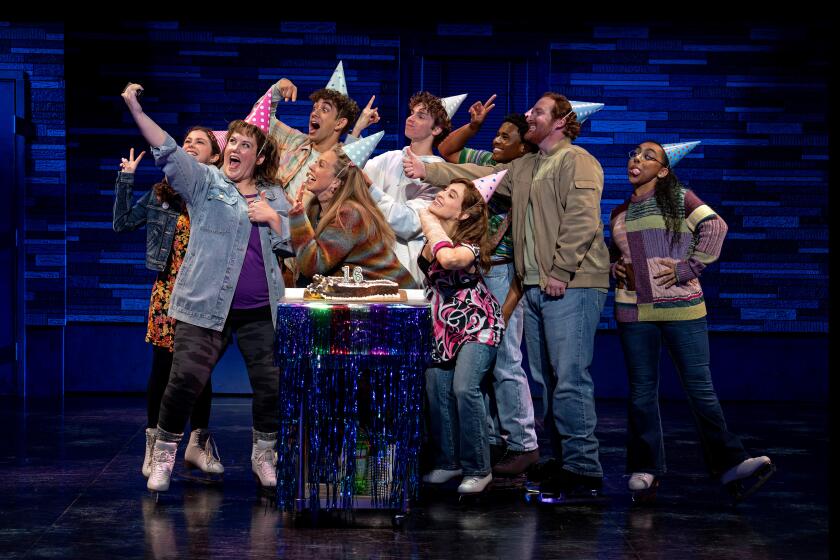Burnout : The Art That Is Emerging From L.A.’s Nightmare is Both Unnerving and Eerily Familiar
Artists are the seismic sensors of society. Marshall McLuhan said so in the ‘60s and it’s still true. Artists feel the quake coming. It’s not that they are able to see the future; they simply see the present more clearly than most of us. The works on these pages are the appalled testaments of Los Angeles illustrators and photographers who were commissioned by this magazine to share their reactions to the L.A. riots. Like jazz or rap, this art improvises on themes of chaos, outrage and paranoia kindled by the conflagration, feelings that will smolder in the ashes for years.
But what is most chilling is that, despite their inspiration from a unique carnival of rage, these works seem as familiar as a persistent bad dream. Greg Clarke’s nightmare montage of helmeted heads, stampeding shadows and cats of bad omen takes us back to those nights a month ago when smoke covered our moon. But it also takes us further, to Weimar Germany in the 1920s, when another society was falling apart and artists like Otto Dix drew its image in bile. Richard Downs has one foot back in cabaret Berlin, too, though his imagination includes human sacrifice as old as history. Still, he hopes for a healing. It requires a certain cockeyed optimism to even make art in a world like this.
These images remind us of other times we have failed to heed the oracles. After World War II, artists like Francis Bacon and Jean Dubuffet warned of unleashing the beast, the evil side of us all, even as Joel Nakamura and Christian Clinton do on these pages. The prophetic art of the ‘50s and ‘60s pretended to have a certain laconic cool. We took the Johns’, Rauschenbergs and Warhols of the Pop Era for simply rather amusing chaps, but they were trying to tell us something; there was a message about heartlessness there. About an Armageddon of objectivity, like the TV cameras that watched the riots and the artists who watched the TV screens. Here, Scott Morgan and Todd Gray saw the stinking mess the way Warhol might have. Greg Spalenka seems to put Francis Bacon’s teeth in an old Jasper Johns joke about art critics and make it say something oblique about sex and violence.
There is more than one aspect of the beast. During war and riot there seems to be a real enemy. But before war and riot there are the feral animals, waiting for some chance event to release the beast stalking our souls. A shocking legal decision can unlock the cage, but the mad animal was always in there, growling.
Some say the riots were a class war or a consumer war, but those are just new labels for the timeless monsters of resentment and greed. The artists know that the demon they depict is always the same predator in the end, the snarling power figures of Oceanic art, African fetishes, the stone jaguars of pre-Columbia. The beast we kill, no matter what we call it--thugs, rioters, “those people”--is ourselves. The beast must be tamed from within. Dauna Whitehead seems to give us a choice between a serene garden and the charnel house of the gutted building. Let’s hope we still have that choice. Otherwise, we’ll just have more of Sherry Etheridge’s charred crosses to contend with. Another cross to bear.
Artists feel impotent in this society. What can their little works do? All bear witness to recurrence. They ask the world, with a certain asperity, if it is finally going to learn.
More to Read
The biggest entertainment stories
Get our big stories about Hollywood, film, television, music, arts, culture and more right in your inbox as soon as they publish.
You may occasionally receive promotional content from the Los Angeles Times.










